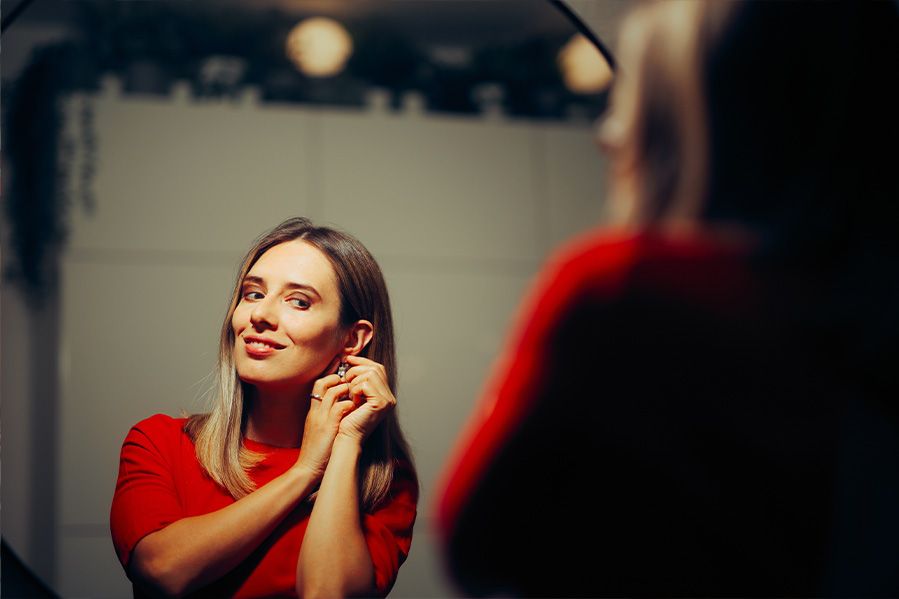
Choosing the right outfit for a wedding officiant is an important aspect of wedding planning that often gets overlooked. The officiant plays a central role in the ceremony, and their attire can contribute significantly to the overall aesthetic and tone of the event. From traditional robes to modern suits, the options for officiant outfits are diverse, and the choice depends on several factors including the type of ceremony, the setting, the couple's preferences, and the officiant's personal style. Here are some detailed considerations and options for wedding officiant outfits.
Traditional Religious Attire
For religious ceremonies, officiants often wear traditional attire that reflects their role and the customs of their faith.
1. Clerical Robes and Vestments:
In many Christian denominations, officiants wear clerical robes or vestments. These can include:
Cassocks and Surplices: Common in Catholic, Anglican, and Episcopal traditions, these are long, flowing garments, often in black and white.
Stoles: A stole is a long, scarf-like garment worn around the neck. Its color can vary depending on the liturgical season or the specific religious occasion.
Chasubles: Worn over other vestments during the Mass, chasubles are often richly decorated and symbolize the grace of the sacrament.
2. Rabbi’s Attire:
In Jewish weddings, a rabbi typically wears a suit and a yarmulke (a traditional skullcap). Some may also wear a tallit (prayer shawl) during the ceremony.
3. Imam’s Attire:
For Islamic weddings, an imam might wear a traditional thobe (a long robe) and a kufi or turban.
Formal and Semi-Formal Attire
For non-religious or less traditional weddings, the officiant’s attire can be more flexible, ranging from formal to semi-formal.
1. Suits and Tuxedos:
Classic Suits: A well-tailored suit in black, navy, or grey is a timeless choice. It’s suitable for almost any wedding setting, from a formal indoor ceremony to a chic outdoor event.
Tuxedos: For black-tie weddings, a tuxedo adds an extra level of sophistication. A black tuxedo with a bow tie is a classic option, though variations in color and style can add a modern twist.
2. Blazers and Dress Pants:
For semi-formal or less traditional ceremonies, a blazer paired with dress pants can strike the right balance between elegance and comfort. Light-colored blazers in shades of blue, grey, or even pastel hues can be appropriate for daytime or outdoor weddings.
Casual and Themed Attire
Casual and themed weddings allow for more creativity and personalization in the officiant’s outfit.
1. Casual Wear:
Smart Casual: For a laid-back wedding, a smart-casual outfit such as a dress shirt and chinos can be appropriate. Adding a blazer can elevate the look while keeping it relaxed.
Seasonal Attire: In summer, lighter fabrics and colors are ideal. Linen suits or even well-fitted short-sleeve shirts can work for a beach or garden wedding. In winter, darker colors and heavier fabrics like wool are suitable.
2. Themed Outfits:
When the wedding has a specific theme, the officiant’s outfit can be tailored to match.
Vintage: For a vintage-themed wedding, the officiant can wear attire from the chosen era, such as a 1920s-style suit with a bowler hat or a 1950s-inspired dress.
Rustic/Boho: A rustic or boho wedding might call for more relaxed and earthy attire. Think suspenders, bow ties, and vests for men, and flowing dresses or skirts for women.
Fantasy or Sci-Fi: For fans of genres like fantasy or sci-fi, costumes inspired by favorite movies or books can add a fun and unique element. An officiant might dress as a character from "Lord of the Rings" or "Star Wars," for example.
Cultural Attire:In multicultural weddings, incorporating traditional attire from one or both cultures can be a meaningful choice.
1. Traditional Eastern Attire:
Indian: An Indian wedding might see an officiant in traditional attire such as a kurta or sherwani for men, and a sari or lehenga for women.
Chinese: For a Chinese wedding, the officiant might wear a traditional cheongsam or qipao.
2. African Attire:
For African weddings, attire can include traditional garments such as a dashiki or agbada for men, and a kente cloth dress or gele for women.
 Personal Style and Comfort
Personal Style and Comfort
Ultimately, the officiant’s personal style and comfort should be taken into account. An officiant who feels comfortable and confident in their attire will perform their role more effectively.
1. Personal Flair:
Officiants with a distinctive personal style can incorporate elements that reflect their personality. This might include unique accessories, such as a statement necklace or a colorful tie.
2. Comfort Considerations:
Comfort is key, especially for outdoor weddings or ceremonies that may involve a lot of movement. Breathable fabrics, well-fitted clothing, and comfortable footwear are essential.
Matching the Wedding’s Aesthetic
The officiant’s outfit should complement the overall aesthetic of the wedding. Coordination with the couple and the wedding planner can ensure a cohesive look.
1. Color Coordination:
Choosing colors that match or complement the wedding color scheme can create a harmonious look. This might involve subtle accents, like a tie or pocket square in the wedding colors.
2. Venue Appropriateness:
The venue can also influence the choice of attire. A grand cathedral might call for more formal attire, while a beachside ceremony might be better suited to something more casual and light.
The wedding officiant’s outfit is an important part of the overall ceremony, contributing to the visual and emotional tone of the event. Whether the choice is traditional religious attire, a formal suit, a themed costume, or something entirely unique, it should reflect the nature of the wedding and the preferences of the couple. By considering factors such as the type of ceremony, the setting, cultural significance, and personal comfort, the officiant can choose an outfit that enhances the beauty and significance of the occasion.
Add Your Comment